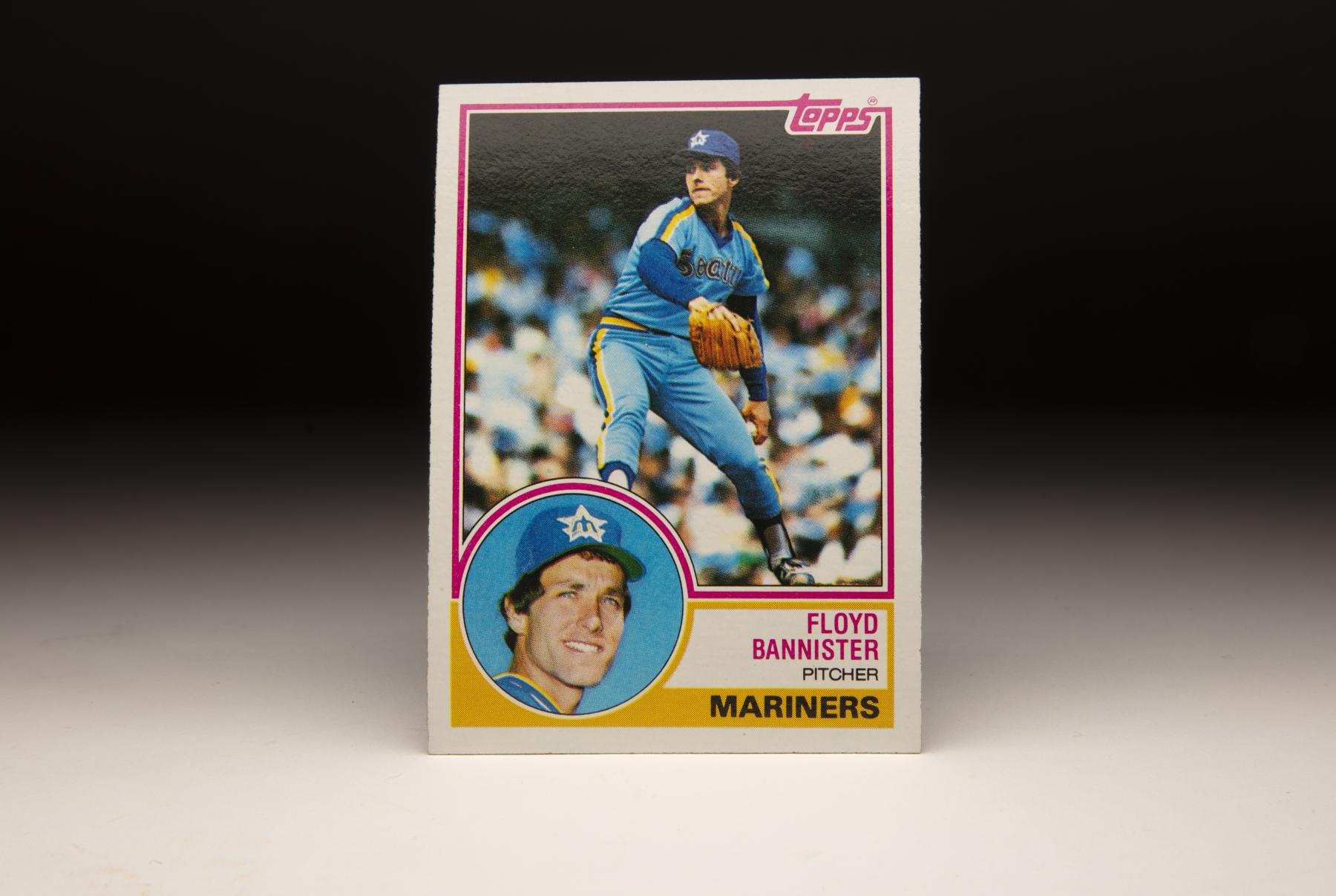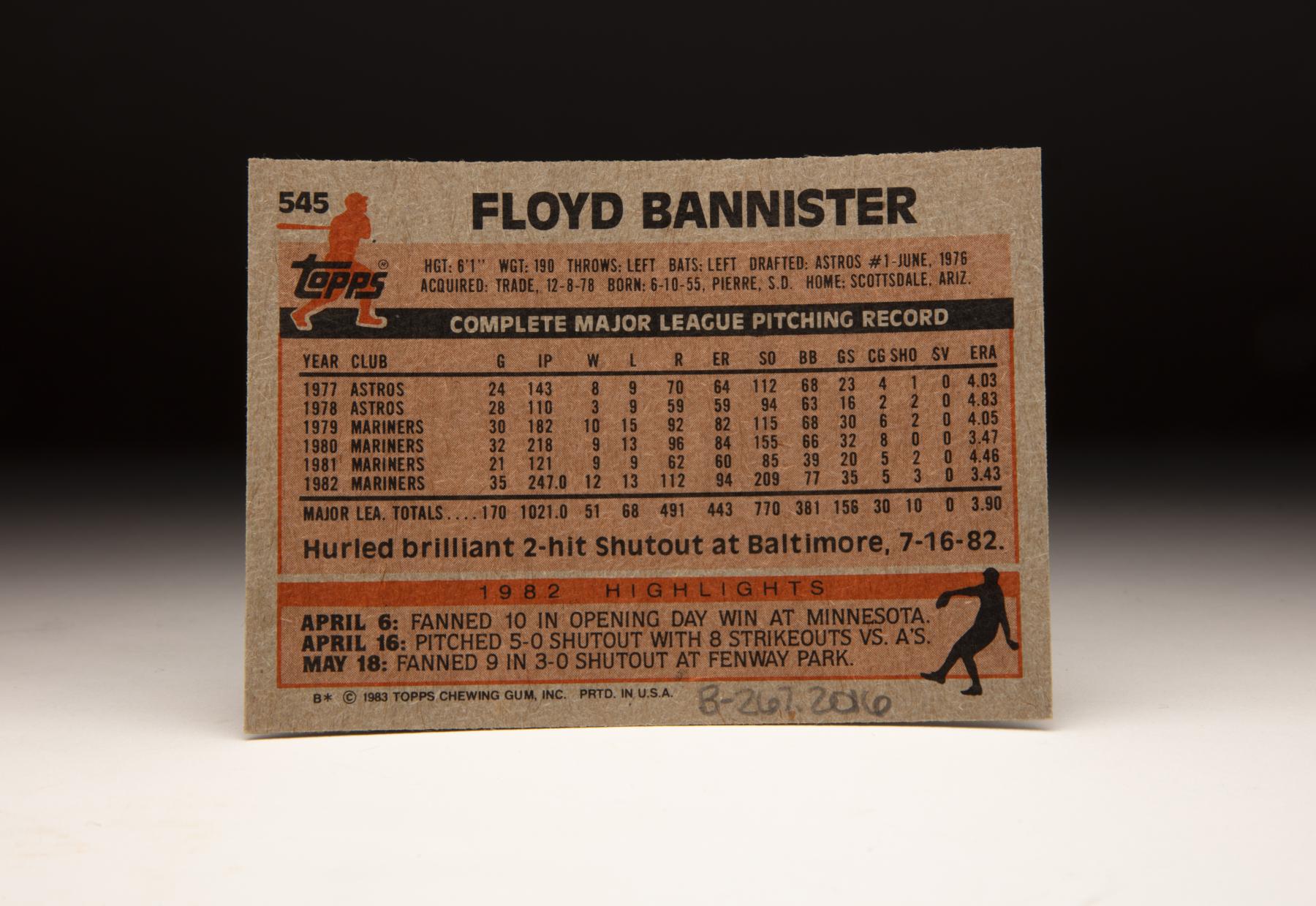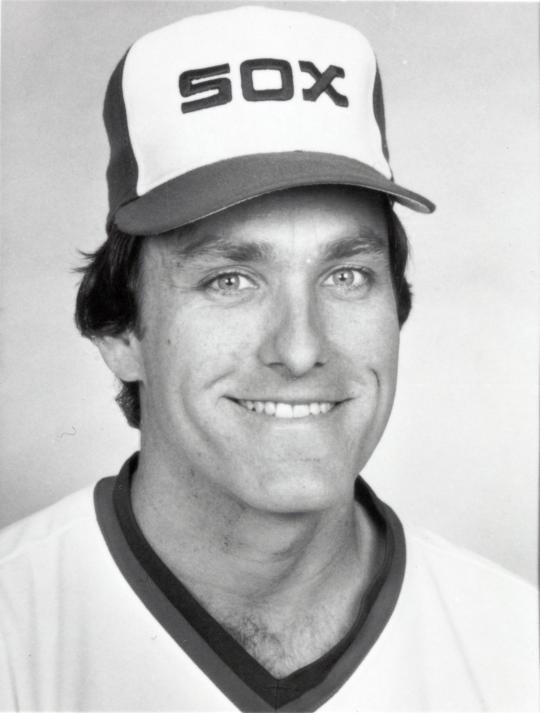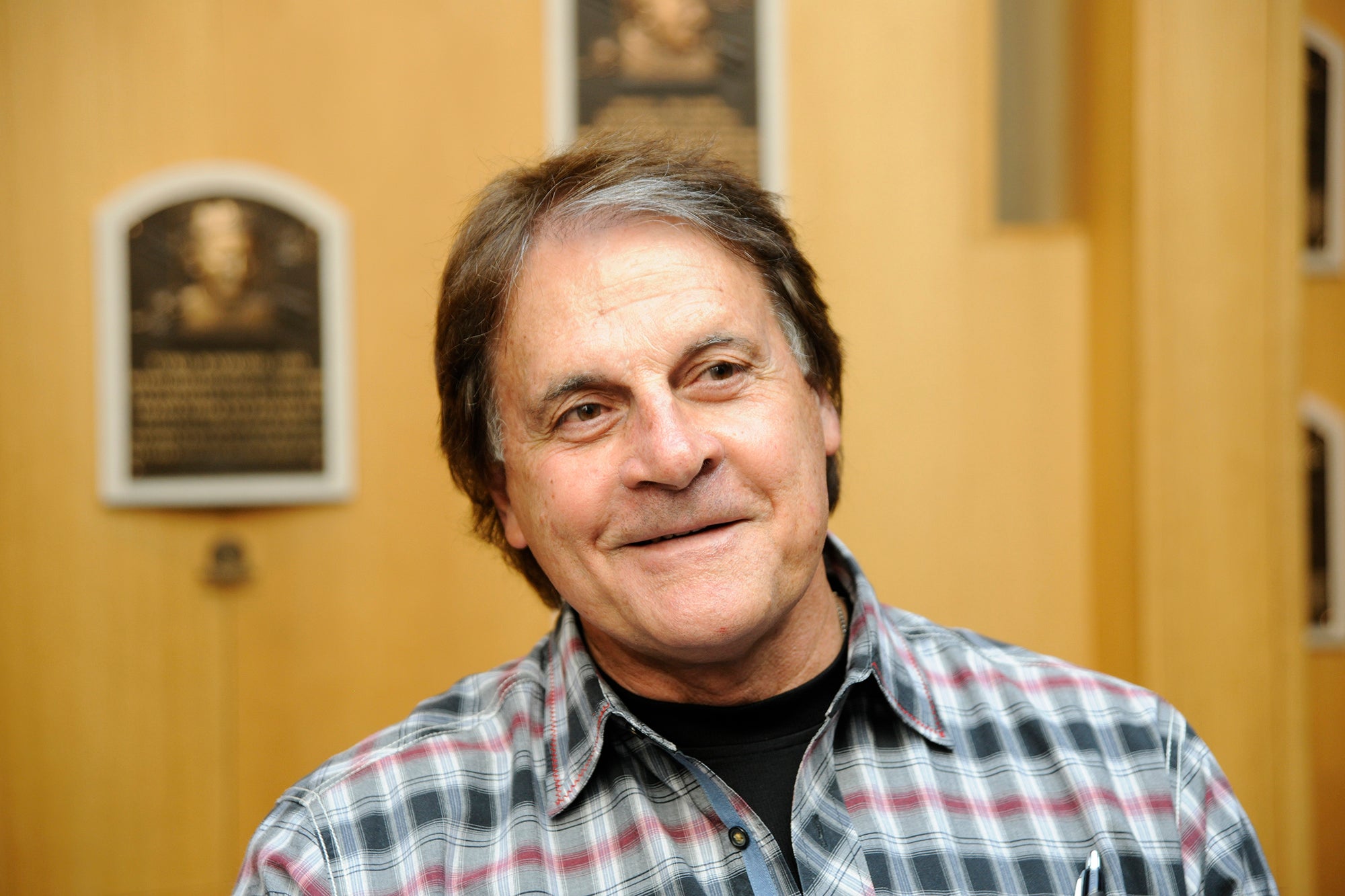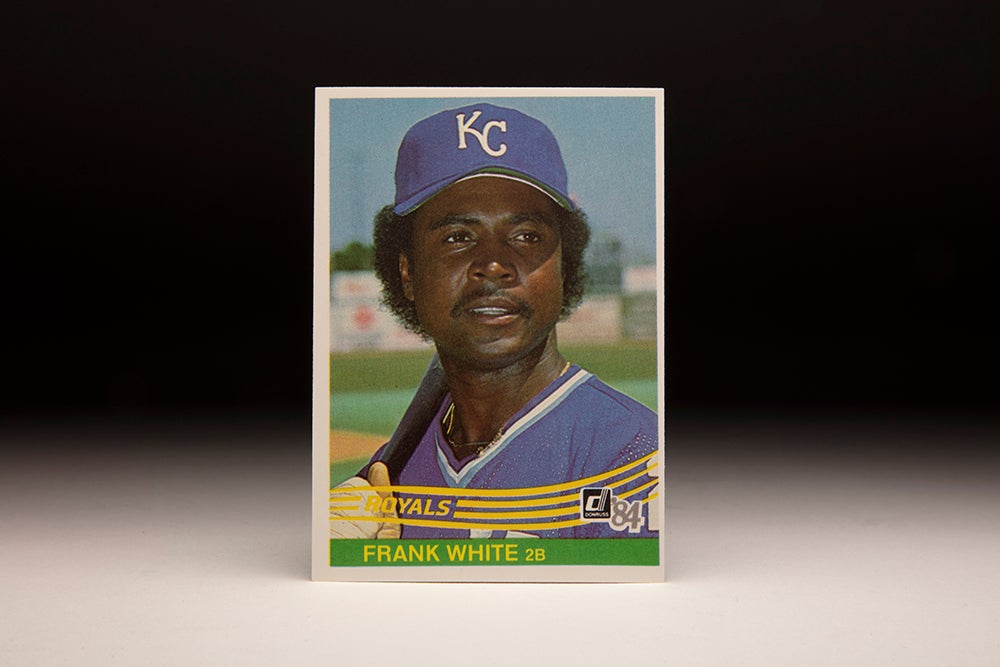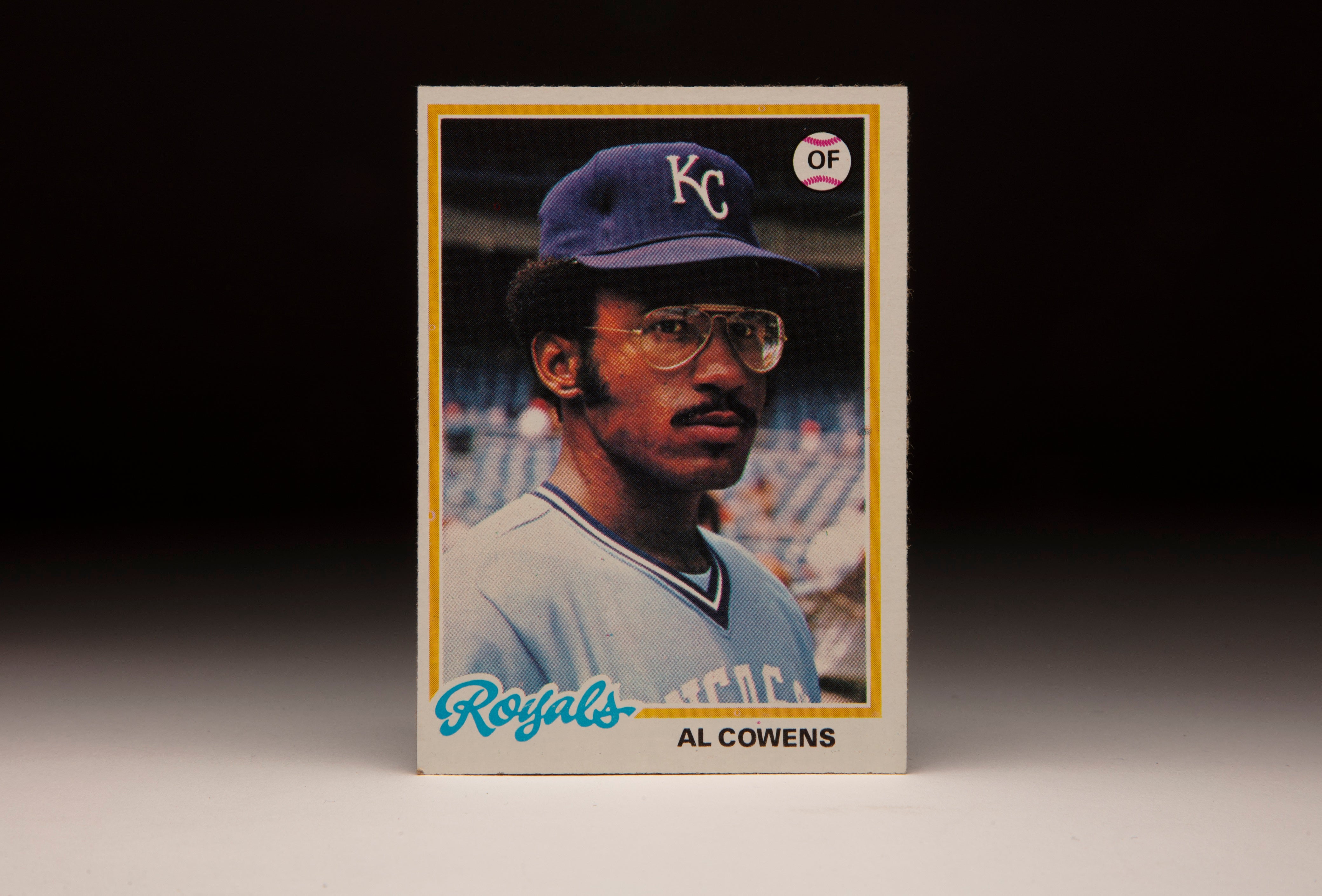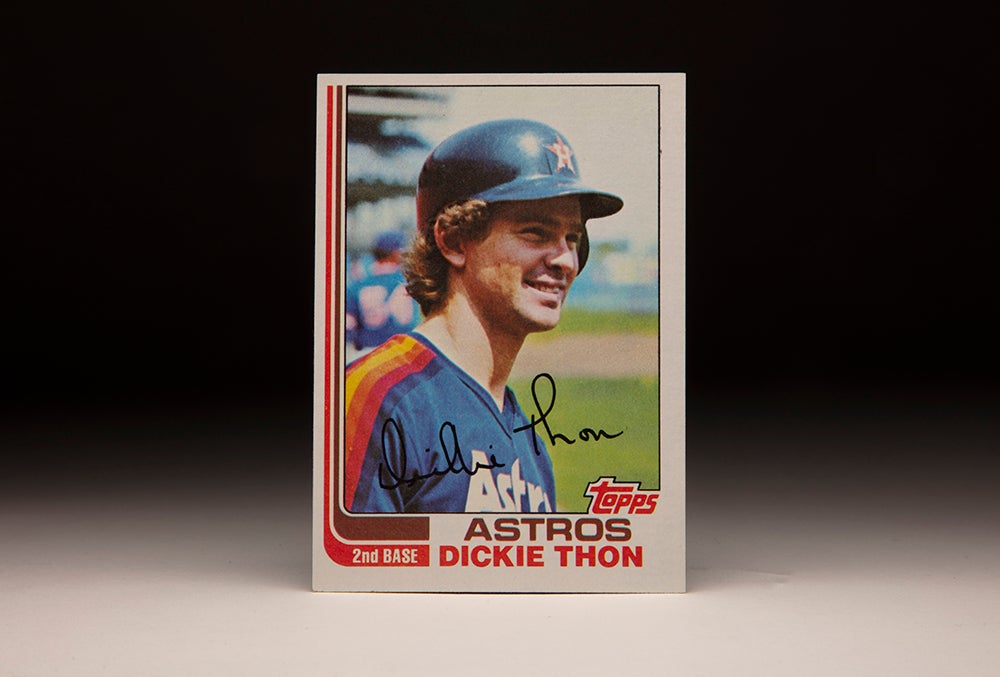#CardCorner: 1983 Topps Floyd Bannister
He was the No. 1 overall pick in the 1976 June MLB Draft and pitched 15 years in the big leagues, winning 134 games.
And though Floyd Bannister may not have had a career path that took him to Cooperstown, he did post the best Wins Above Replacement total for any player drafted 1:1 from 1966-76. In an era where the draft was far from an exact science, Bannister acquitted himself well.
Born June 10, 1955, in Pierre, S.D., Bannister – who has more wins than any other player born in South Dakota and is one of just 11 pitchers with at least 100 MLB appearances who were born in the Mount Rushmore State – was the son of Ivo and Ione Bannister. His father worked for the Northwestern Railroad, and the Bannister family left Pierre when Floyd was three and Ivo got a job in Seattle working for Boeing.
Pitching for Kennedy Catholic High School in Burien – a Seattle suburb – Bannister led the Lancers to the Triple-A Washington State title in 1973 and finished his high school career with a record of 31-3. The Oakland Athletics selected Bannister in the third round of the 1973 MLB Draft – eight spots after the Orioles took future Hall of Famer Eddie Murray – but Bannister chose to enroll at Arizona State to play baseball for a Sun Devils team that had already won three College World Series titles and finished in second place in both 1972 and 1973.
By 1975, Bannister was a second-team All-American selection. During his junior year in 1976, Bannister went 19-2 and collected several player of the year awards. The Houston Astros, who had finished the 1975 season with a record of 64-97, held the first overall pick in the 1976 MLB Draft and took Bannister.
In three seasons with the Sun Devils, Bannister was 38-5. It was success similar to that of former ASU ace Eddie Bane, who was selected with the 11th overall pick in 1973 and went straight to the majors with the Twins. Bane finished his three-year big league career with a 7-13 record.
“I never thought (Bane) should go right up,” Arizona State head coach Jim Brock told the Associated Press after Bannister was drafted. “But Floyd is a different case. I’m sure he can handle (the big leagues) right now. He’s had tremendous pressure here in Arizona with the constant press attention and all the agents who have called him.”
The Astros, however, resisted the temptation to bring Bannister directly to Houston. After signing for a reported $100,000 bonus after protracted negotiations, Bannister reported to Covington, Ky., in the Appalachian League.
“This is a real good league,” Bannister told the Johnson City (Tenn.) Press after his first appearance. “It’s more consistent than playing college baseball.”
After three games, the Astros promoted Bannister to Double-A Columbus of the Southern League for three more starts. He made his final appearance of the season for Triple-A Memphis, posting a combined 2-0 record with a 1.05 ERA in 43 innings, striking out 53 while walking 19.
Entering Spring Training in 1977, there seemed little doubt that Bannister was ready for the big leagues – so much so that Bannister’ agent, Gary Walker, kept his client out of camp in Cocoa, Fla., during a short holdout while the sides discussed how much Bannister would make if he was assigned to Triple-A.
“It seems kind of silly to be arguing over a Triple-A contract when he could be down here earning a major league contract,” Astros general manager Tal Smith told the Associated Press. “This is where the big money is. Bannister has an outstanding chance of getting it but he’s passing up the opportunity.”
Eventually, the two sides came to an agreement on a Triple-A contract. But as Smith predicted, it proved unnecessary when Bannister made the Astros’ Opening Day roster. He made his MLB debut on April 19, 1977, with 1.1 innings in relief of starter Joaquín Andújar, made his first start four days later and then pitched a complete game in his third outing on April 29 in Houston’s 11-3 win over Pittsburgh.
With J.R. Richard, Mark Lemongello, Andújar and Bannister all on the roster – and Richard the oldest at 27 years of age – Houston had one of the most promising rotations in baseball. Bannister would go 8-9 with a 4.04 ERA in 142.2 innings that season, striking out 112 and finishing fourth in the NL Rookie of the Year balloting.
Bannister got off to a slow start in 1978 following a spring bout with tonsilitis but was 3-3 with a 2.61 ERA after shutting out the Reds on June 29. From that point on, however, the Astros lost every game Bannister appeared in the rest of that season. He would finish the season 3-9 with a 4.81 ERA and was demoted to the bullpen. Houston went 5-23 in games Bannister pitched in 1978.
On Dec. 8, the Astros sent Bannister to the Mariners in a one-for-one deal for shortstop Craig Reynolds. A little more than a week earlier, Houston sent Lemongello to the Blue Jays in a trade that brought catcher Alan Ashby in return.
“You talk about giving up two young pitching prospects in the last two weeks, and it’s true, but we also filled two everyday positions,” Astros manager Bill Virdon told United Press International following the Bannister trade. “As far as Bannister goes, I don’t think there’s a pitcher in our league with more potential. He just had trouble with his control. As soon as he learns to get ahead of the hitters, he’s going to be a fine one.”
Joining a Mariners team playing in its third season in 1979, Bannister was a respectable 10-15 for a club that lost 95 games, posting a 4.05 ERA in 30 starts. Pitching in the city where he grew up, Bannister threw well in his starts in the Kingdome but struggled on the road. After winning his final road start in 1977, Bannister lost all six of his road decisions in 1978 and then his first eight in 1979 – stretching the string to 14 in a row before beating the Royals in Kansas City on Sept. 14, 1979.
It was Bannister’s first win in a non-dome stadium in 715 days – and the victory made headlines in papers across the country.
“There’s no doubt about it, this feels good,” Bannister told the Tacoma News Tribune. “Now, hopefully, I can start a string of wins outside.”
Bannister was 9-13 in 1980 but reduced his ERA to 3.47 while topping the 200-innings pitched mark for the first time and striking out 155 batters. A year later, Bannister went 9-9 with a 4.45 ERA in the strike-shortened 1981 season.
In 1982, Bannister drew the Opening Day start for the Mariners. And though he was shelled in an 11-7 loss to the Twins that day, he struck out 10 batters – providing a glimpse of what was to come. Bannister went 12-13 that year with a 3.43 ERA in 247 innings, fanning an AL-best 209 batters and earning his first All-Star Game selection.
Bannister finished 16-10 with a 3.35 ERA and 193 strikeouts – the top total on the Sox – in 217.1 innings as Chicago won 99 games and the AL West title. Bannister’s 8.0 strikeouts per innings pitched led the AL that year.
In the ALCS vs. the Orioles, Bannister drew the Game 2 start – 24-game winner Hoyt pitched Game 1 and Dotson, who won 22 games that year, started Game 3 – and allowed three earned runs over six innings. But Orioles rookie sensation Mike Boddicker pitched a five-hitter and struck out 14 as Baltimore won 4-0. The White Sox, however, trailed just 2-0 into the sixth before Gary Roenicke, who went 2-for-2 with two walks in the game, hit a two-run homer in the bottom of the sixth.
“In my six years in the majors, this was the best game I’ve ever had,” Roenicke told the Associated Press. “Maybe I bear down a little more against (Bannister) because he’s one of the best left-handers in the league.”
It would be the only postseason game of Bannister’s career as the Orioles defeated the White Sox in four games to advance to the World Series.
In 1984, the White Sox were unable to repeat as division champions and Bannister’s ERA ballooned by almost a point-and-a-half to 4.83 as he went 14-11. In 1985, Bannister’s record fell to 10-14 but he fanned 198 batters in 210.2 innings to lead again the AL with 8.5 strikeouts per nine innings. He repeated his 10-14 record in 1986 while reducing his ERA to 3.54, starting just one game in June while recovering from a knee injury.
He enjoyed a bit of a bounce-back campaign in 1992 with the Rangers, appearing in 36 games as a reliever while working to a 6.32 ERA before the Rangers released him on Aug. 13, a move that ended his career.
Bannister left the game with a record of 134-143 with a 4.06 ERA, 1,723 strikeouts and a career WAR of 26.4. His son, Brian Bannister, was a seventh-round draft choice by the Mets out of the University of Southern California in 2003 and pitched five seasons in the big leagues for the Mets and Royals before becoming a well-respected pitching instructor who embraced new metrics and analytics.
His father, meanwhile, was of an age where a pitcher’s value boiled down to two numbers: Wins and losses.
“I look at my career from a positive standpoint,” Bannister told the Fort Worth Star-Telegram as he entered his final season. “The won-loss and the stats could have been better but early in my career I played with some bad teams, probably when I was in my prime, and I didn’t get a chance for a lot of victories. But I’ve had a long career and now I’m just thankful for this opportunity.”
Craig Muder is the director of communications for the National Baseball Hall of Fame and Museum

